Pirates and Buried Treasure: Secrets, Strange Tales, and Hidden Facts about Pirates (Top Secret Files of History) Series: Top Secret Files Written by Stephanie Bearce Prufrock Press 8/01/2015 978-1-61821-421-8 128 pages Age 9—12 “Pirates of the Golden Age had to deal with scurvy, fight ferocious battles, and …![]()
Viewing: Blog Posts Tagged with: spock, Most Recent at Top [Help]
Results 1 - 25 of 26
Blog: Kid Lit Reviews (Login to Add to MyJacketFlap)
JacketFlap tags: NonFiction, Middle Grade, Books for Boys, 5stars, Library Donated Books, pirates, Series, Caribbean, Blackbeard, Strange Tales, and Hidden Facts about Pirates, Pirates and Buried Treasure: Secrets, Prufrock Press, royal navies, Stephanie Bearce, Top Secret Files, Add a tag
Blog: Welcome to my Tweendom (Login to Add to MyJacketFlap)
JacketFlap tags: folklore, Caribbean, supernatural, creepy, #weneeddiversebooks, Algonquin Young Readers, recommendation from a friend, family, Friendship, Add a tag
I will be booktalking this one as soon as we go back to school!
Blog: OUPblog (Login to Add to MyJacketFlap)
JacketFlap tags: Books, caribbean, Latin America, tango, salsa, mambo, *Featured, Theatre & Dance, Latin music, Afro-Cuban, Caribbean Dance in Global Commerce, Juliet McMains, Latin dance, Queer tango, Spinning Mambo into Salsa, Add a tag
Partnered social dancing has enjoyed a steady rise in popularity over the past decade as more and more people recognize its social, physical, and emotional benefits. Because “touch” dancing never fell out of fashion in Latin America, Latin dances have evolved to respond to the sensibilities of their contemporary practitioners without loosing their deep connection to a historical legacy. Two of the most popular Latin dances worldwide are salsa, with roots in the Spanish Caribbean, and the Argentine tango.
The post Salsa or tango: which Latin dance is right for you? appeared first on OUPblog.
Blog: Geoffrey Philp's Blog (Login to Add to MyJacketFlap)
JacketFlap tags: Amazon, Short story, Kindle, Ebook, Caribbean, domestic violence, Jamaica, Fatherhood, Geoffrey Philp, Add a tag
The prevalence of violence, especially domestic violence with Caribbean families, has been one of the themes in my two short story collections, Uncle Obadiah and the Alien and Who's Your Daddy?
In the short story, "Cry to Me," from Who's Your Daddy, which I've republished as an eBook, I've combined domestic violence with fatherhood in the story of David Hamilton, a respected professor, whose life is disrupted when his daughter become a victim of domestic violence.
I think "Cry to Me" is a precursor to a darker story that I am currently working on in which fatherhood turns ugly. Stay tuned.
Blog: Geoffrey Philp's Blog (Login to Add to MyJacketFlap)
JacketFlap tags: BBC, Caribbean, Caribbean authors, Guyana, Commonwealth, Sasenarine Persaud, Add a tag
Sasenarine Persaud recently returned from a successful eight (8) event reading tour of the UK, focused in Edinburgh and Glasgow. Sasenarine’s trip, funded mainly by the British Council, coincided with the Commonwealth Games in Glasgow. As part of the Games, a poet from each Commonwealth country read and recorded a poem on the BBC’s (British Broadcasting Corporation) Poetry Postcard Program. Sasenarine’s poem, ‘Georgetown’ (from his soon to be released book, Love in a Time of Technology) is available here: http://www.bbc.co.uk/programmes/p022ys3f
The poem was printed on postcards and distributed throughout the Commonwealth Games. Sasenarine opened his tour with a reading and discussion on poetry and poetics, culture, homelands and exiles at the BBC in Glasgow in front a live audience.
This was followed by an interview and a reading at the Empire Café in Glasgow with an audience of over 200, and with the Scottish Minister of External Affairs and International Development introducing the evening. The Empire Café was formed to look at Scottish involvement with the slave trade and its association with the plantation system in the West Indies. The Empire Café commissioned Sasenarine to write a poem (‘Campbellville’) which was published by the Café in an anthology, and which led to the Café extending an invitation to visit Scotland.
Two (2) readings at the Saltire Society (Edinburgh Festival Fringe), in the historic courtyard building where Robert Louis Stevenson’s narrator of Treasure Island told the story of his iconic novel,followed.
Sasenarine rounded off his trip with three (3) readings at the Edinburgh International Book Festival (EIBF). He had the distinction of opening the 2014 edition of the EIBF on August 9, with a solo reading to a packed tent at a reading called “10 at 10”. Later in the day he read with three (3) other poets in an event billed as “Voices of the Caribbean Diaspora,” which occurred in the Baillie Gifford Main Theatre and which was introduced by Jackie Kay. His final appearance at the EIBF was at an event titled, ”Jura Unbound”, an evening of poetry, music and reflections, the evening before his departure.
Blog: Geoffrey Philp's Blog (Login to Add to MyJacketFlap)
JacketFlap tags: Africa, Caribbean, Jamaica, Marcus Garvey, Exonerate Marcus Garvey, Pan-African, Add a tag
Education
Self-Respect
Economics
Community
https://www.causes.com/campaigns/71936-urge-president-obama-to-exonerate-marcus-garvey
Thank you for your support.
Blog: Geoffrey Philp's Blog (Login to Add to MyJacketFlap)
JacketFlap tags: Caribbean, Jamaica, Haiti, Geoffrey Philp, Guyana, Donna Aza Weir-Soley, Malachi Smith, Christine Craig, Brenda Richards, Max Freesney Pierre, Add a tag
A night of poetry, good food and raffle prizes to raise funds for Franklyn March, a sickle cell patient in Jamaica who desperately needs a hip replacement surgery.
Blog: Geoffrey Philp's Blog (Login to Add to MyJacketFlap)
JacketFlap tags: Caribbean, Caribbean authors, Accepting Submissions, sx salon, Small Axe, Add a tag
sx salon: a small axe literary platform invites submissions for Fall 2014 and Winter 2015. sx salon, launched in 2010 as part of the Small Axe Project, is an electronic publication dedicated to literary discussions, interviews with Caribbean literary figures, reviews of new publications (creative and scholarly) related to the Caribbean, and short fiction and poetry by emerging and established Caribbean writers. sx salon also houses the Small Axe Literary Competition, launched in 2009. Visit www.smallaxe.net/sxsalon to view past issues.
sx salon publishes a new issue every three months and invites submissions of the following:
Literary Discussions that engage issues relevant to Caribbean literary studies: 2,500 words. Anticipated discussions for Summer and Fall include “Chinese Caribbean Literature” and “Dub Poetry.”
Book Reviews of recent (published no more than two years preceding the date of submission) creative literary works by Caribbean authors or scholarly works related to Caribbean literary studies: 1,200 words. Please contact [email protected] to query available books.
Interviews with Caribbean literary figures: 2,500 words
Poetry and Short Fiction that engage regional and diasporic Caribbean themes and concerns: up to 2 poems or fiction of up to 4,000 words
Please visit http://smallaxe.net/sxsalon/submissions.php for more detailed guidelines for submissions.
INQUIRIES AND SUBMISSIONS
All inquiries and submissions should be sent electronically to the following addresses:
Literary discussions, book reviews, interviews: Kelly Baker Josephs [email protected]
Short fiction and poetry: Andrea Shaw [email protected]
Blog: Geoffrey Philp's Blog (Login to Add to MyJacketFlap)
JacketFlap tags: Caribbean, Jamaica, Haiti, Geoffrey Philp, Mia Leonin, #NCAHM2014, Anjanette Delgado, MJ Fievre, Cuba, Add a tag
The Betsy Writer's Room presents a multilingual, multicultural Reading at The Betsy, Friday, June 27 at 6 p.m. in B Bar.
The Betsy hosts authors from various Hispanic and Caribbean countries in a multilingual reading in B Bar. The evening will be broken up into two readings:
Escribe Aqui will feature readings in Spanish with Hernan Vera Alvarez (Argentina), Pedro Medina Leon (Peru), Camilo Pino (Venezuela) and Jose Ignacio Valenzuela (Chile) at 6PM.
Write Here will follow, with readings in English by Anjanette Delgado (Cuba), MJ Fievre (Haiti), Mia Leonin (Cuba) and Geoffrey Philp (Jamaica).
Special Musical Performance by jazz saxophonist, Nestor Zurita.
Books & Books will have copies from selected works available for purchase.
CLICK HERE TO RESERVE YOUR SEAT NOW.<http://the-betsy-south-beach.ticketleap.com/betsy-write-here/details>
Cash bar available. This is a free event.
Blog: Geoffrey Philp's Blog (Login to Add to MyJacketFlap)
JacketFlap tags: Caribbean, Jamaica, Marcus Garvey, Exonerate Marcus Garvey, Caribbean American Heritage Month, #NCAHM2014, Add a tag
on my words,is not the asthma,
the shortness of breath
my body that will be taken away soon-soon
hillside where my father lies buried
under the broad leaves of the breadfruit;
his bones warmer than these white,
cold pages swirling in my doorway
Dance the Guns to Silence: 100 Poems Inspired by Ken Saro-Wiwa.
Blog: Geoffrey Philp's Blog (Login to Add to MyJacketFlap)
JacketFlap tags: Caribbean American Heritage Month, #NCAHM2014, Caribbean, Add a tag
Together, as a Nation of immigrants, we will keep writing that story. And alongside our partners throughout the Caribbean, we will keep working to achieve inclusive economic growth, access to clean and affordable energy, enhanced security, and lasting opportunity for all our people. As we honor Caribbean Americans this month, let us strengthen the ties that bind us as members of the Pan American community, and let us resolve to carry them forward in the years ahead.
Presidential Proclamation for 2014 National Caribbean American Heritage Month -- JUNE 1st - [email protected] - Gmail:
'via Blog this'
Blog: Geoffrey Philp's Blog (Login to Add to MyJacketFlap)
JacketFlap tags: Small Axe, Caribbean, Call For Papers, Add a tag
The transformation of the academy by the digital revolution presents challenges to customary ways of learning, teaching, conducting research, and presenting findings. It also offers great opportunities in each of these areas. New media enable oration, graphics, objects, and even embodied performance to supplement existing forms of scholarly production as well as to constitute entirely original platforms. Textual artifacts have been rendered literally and figuratively three-dimensional; opportunities for interdisciplinary collaboration have expanded exponentially; information has been made more accessible and research made more efficient on multiple levels. Scholars are called upon, with some urgency, to adapt their research and pedagogical methods to an academic climate deluged by a superabundance of information and analysis. This has created opportunities for open-ended and multiform engagements, interactive and continually updating archives and other databases, cartographic applications that enrich places with historical information, and online dialogues with peers and the public.
The need for such engagements is especially immediate among the people of the Caribbean and its diasporas. Information technology has become an increasingly significant part of the way that people frame pressing social problems and political aspirations. Aesthetic media like photography and painting—because they are relatively inexpensive and do not rely on literacy or formal training—have become popular among economically dispossessed and politically marginalized constituencies. Moreover, the Internet is analogous in important ways to the Caribbean itself as dynamic and fluid cultural space: it is generated from disparate places and by disparate peoples; it challenges fundamentally the geographical and physical barriers that disrupt or disallow connection; and it places others and elsewheres in relentless relation. Yet while we celebrate these opportunities for connectedness, we also must make certain that the digital realm undermine and confront rather than re-inscribe forms of silencing and exclusion in the Caribbean.
In this unique one-day public forum we intend to engage critically with the digital as practice and as historicized societal phenomenon, reflecting on the challenges and opportunities presented by the media technologies that evermore intensely reconfigure the social and geographic contours of the Caribbean. We invite presentations that explicitly evoke:
- the transatlantic, collaborative, and/or interdisciplinary possibilities and limitations of digital technologies in the Caribbean metaphorical linkages between the digital and such Caribbean philosophical, ethical, and aesthetic concepts as "submarine unity," the rhizome, Relation, the spiral, repeating islands, creolization, etc.
- gendered dimensions of the digital in the Caribbean
- the connection between digital technologies and practices of the so-called Caribbean folk
- specific engagements with digital spaces and/or theories by individual Caribbean artists and intellectuals
- the ways in which digital technologies have impacted or shaped understandings of specific Caribbean political phenomena (e.g. sovereignty, reparations, transnationalism, migration, etc.)
- structural means of facilitating broad engagement, communication, and accessibility in the Caribbean digital context (cultivation of multilingual spaces, attentiveness to the material/hardware limitations of various populations)
Both traditional papers and integrally multimedia papers/presentations are welcome. We also welcome virtual synchronous presentations by invited participants who cannot travel to New York City to attend the event. Selected proceedings from this forum will be published in the inaugural issue (September 2015) of sx:archipelagos – an interactive, born-digital, print-possible, peer-reviewed Small Axe Project publication.
Abstracts of 300 words and a short bio should be sent to Kaiama L. Glover and Kelly Baker Josephs ([email protected]) by 1 June 2014. Successful applicants will be notified by 1 August 2014.
Blog: Geoffrey Philp's Blog (Login to Add to MyJacketFlap)
JacketFlap tags: Caribbean, Jamaica, Trinidad and Tobago, Caribbean authors, Grenada, Hollick Arvon Caribbean Writers Prize, St.Vincent, Add a tag
Blog: Geoffrey Philp's Blog (Login to Add to MyJacketFlap)
JacketFlap tags: Caribbean authors, Bocas Lit Fest, Antigua and Barbuda, Burt Award for Caribbean Literature, Dominica, Caribbean, Jamaica, CODE, Trinidad, Add a tag
Blog: OUPblog (Login to Add to MyJacketFlap)
JacketFlap tags: caribbean, africans, Humanities, *Featured, plantations, plantation, African American Religion, Caribbean Slavery, noel erskine, plantation church, erskine, Books, History, Africa, Religion, black history month, slavery, America, african american, Add a tag
In honor of Black History Month, we sat down with Noel Erskine to learn more about the Plantation Church—the religions that formed on plantations during slavery—and its roots in the Caribbean.
How was the Plantation Church formed?
The Plantation Church was formed through the traffic across the Black Atlantic of Africa’s children, packed like sardines, and treated as human cargo, to work on plantations in the Americas. The plantation was at first a site of human bondage, and provided the context for chattel slavery, where the entire family was brutalized as they realized that there was a connection between higher sugar prices and cruel treatment of slaves. In plantation society the political power of the African chief was transferred to the white master, except in the context of the plantation, there were no safeguards for women and children. The entire family was dehumanized. Plantation etiquette required submission to the wishes of the master and failure to comply would often elicit a violent response. The will of the master applied to every aspect of plantation life. The master had the right to whip, sell, or trade members of the family whenever or for whatever reason. Africans found it difficult at first to mount a credible form of resistance against the violence perpetrated against them on plantations.
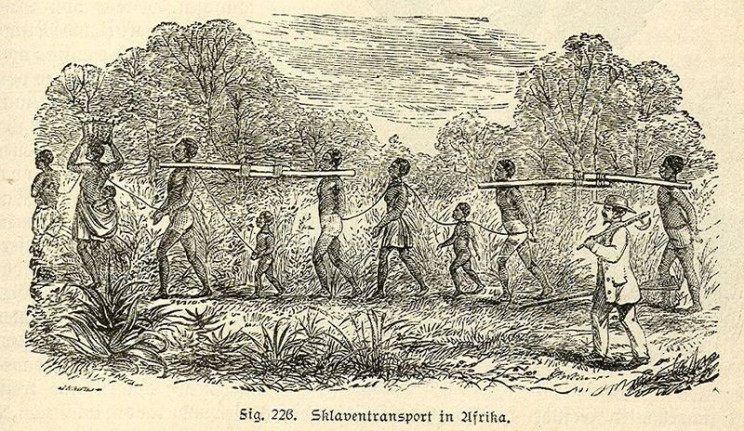
Slaves being transported in Africa, 19th century engraving. From Lehrbuch der Weltgeschichte oder Die Geschichte der Menschheit by William Rednbacher, 1890. Public domain via Wikimedia Commons.
Why was the Plantation Church formed?
It is often forgotten that Africans who were captured and brought against their will to work on plantations in the New World left institutions of their clan and tribe behind. The creation of the Plantation Church was an attempt to hold body and soul together in an alien environment. In the Plantation Church, which was at first an African Church, Africans “stolen from the homeland” had to compensate for the loss of language, culture, and the constant change of environment as they were often sold and separated from members of their families. The cruelty meted out to Africans who traversed the Black Atlantic on route to the Caribbean and North American colonies for work in plantation society is beyond compare in the annals of the history of slavery. The Indians and Spaniards had the support and comfort of their families, their kinsfolk, their leaders, and their places of worship in their sufferings. Africans the most uprooted of all, were herded together like animals in a pen, always in a state of impotent rage, always filled with a longing for flight, freedom, change, and always having to adopt a defensive attitude of submission, pretense, and acculturation to the new world.
What characterized the Plantation Church?
Enslaved Africans on plantations “a long ways from home”, remembered home, and the memory of Africa became a controlling metaphor and organizing principle as they countered the hegemonic conditions imposed on them by their masters. There was a tension between their existence on plantations here in the New World and there in Africa, their home of origin. Here in plantation society they longed for there, their home, Africa – the forests, the ancestors, family, Gods and culture. They remembered the forests and they relived their experience of forests through the practice of religious rituals in the brush arbors, often down by the riverside. The memory of ancestors and a sense that their spirits accompanied them served as sites of a new consciousness on the plantations in which the struggle for survival and liberation took precedence. This awakening convinced them that they would survive through running away to the forests or through suicides that would reunite them with families and the Africa they remembered. It was primarily through religious rituals and the carving out of Black sacred spaces that enslaved persons were able to affirm self and create a world over against plantation society which was created for their families by the master. With the creation of the Plantation Church, the African priest and medicine man/woman were able to prevent the enslaved condition from dominating their consciousness and rob the children of Africa the freedom to dream a new world. It was the community’s memory of Africa that provided hope for dreaming the emergence of new worlds whether in Haiti, South Carolina, or Cuba.
Why is the Caribbean so important to the Plantation Church?
There were more than eleven million enslaved persons who were transported across the Black Atlantic and forced to work on plantations in the New World. Of this number, about 450, 000 arrived in the United States and all the rest went south of the border to the Caribbean nations and South America. More than twice the number of Africans who landed in the United States arrived in each of the islands of Haiti, Jamaica, and Cuba. Additionally, it must be noted that slavery began in the Caribbean as early as 1502, well over a hundred years before the first twenty Africans landed in James Town Virginia in 1619. The historical priority and the numerical advantage point to the Black religious experience being born in the Caribbean and not the United States of America. W.E.B. Du Bois puts this in perspective, “American Negroes, to a much larger extent than they realize, are not only blood relatives to the West Indians but under deep obligations to them for many things. For instance, without the Haitian Revolt, there would have been no emancipation in America as early as 1863. I, myself, am of West Indian descent and am proud of the fact.”
Noel Leo Erskine is Professor of Theology and Ethics at Candler School of Theology and the Laney Graduate School of Arts and Sciences at Emory University. He has been a visiting Professor in ten schools in six countries. His books include Plantation Church: How African American Religion Was Born in Caribbean Slavery, King Among the Thologians, and From Garvey to Marley.
Subscribe to the OUPblog via email or RSS.
Subscribe to only religion articles on the OUPblog via email or RSS.
The post The Plantation Church: a Q&A with Noel Erskine appeared first on OUPblog.
Blog: First Book (Login to Add to MyJacketFlap)
JacketFlap tags: books, Books & Reading, Book Recipients, First Book, Book Distributions, global, Caribbean, USAID, Kyle Zimmer, Haiti, First Book Partners, Jet Blue, Bel-Air, Ecole Herve Romain, Port Au Prince, Add a tag
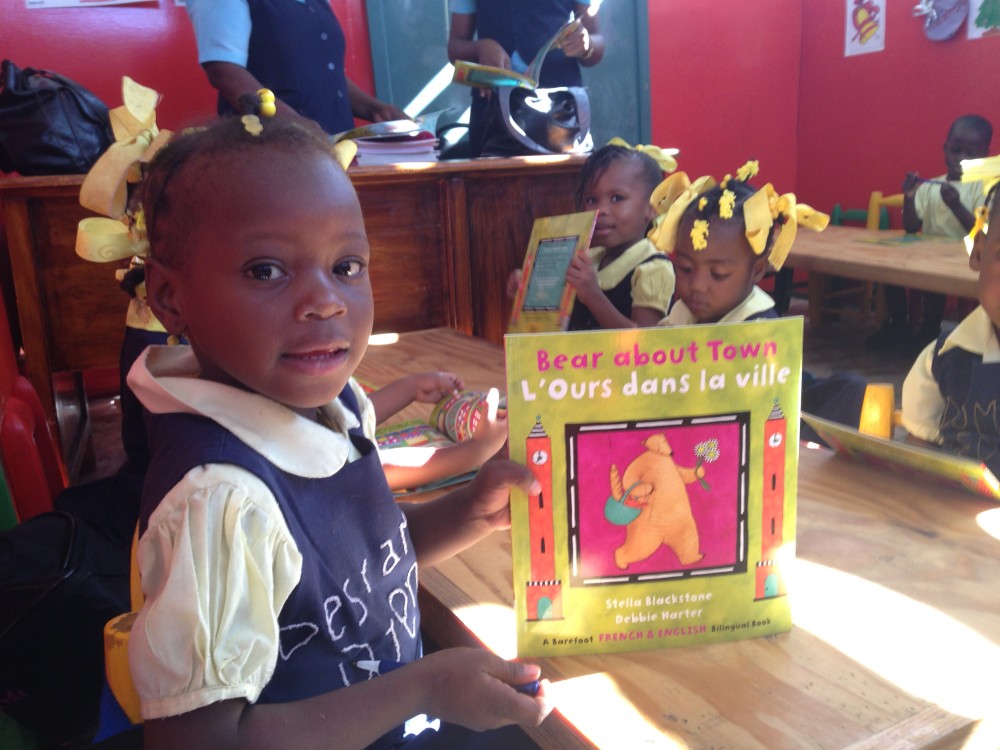 Four years ago this week, a magnitude 7.0 earthquake struck the Caribbean nation of Haiti. The tragedy left 1.5 million citizens displaced from their homes, hundreds of thousands dead and devastated an already depressed economy.
Four years ago this week, a magnitude 7.0 earthquake struck the Caribbean nation of Haiti. The tragedy left 1.5 million citizens displaced from their homes, hundreds of thousands dead and devastated an already depressed economy.
Today, Haiti remains the poorest country in the Americas. And while much has been done to aid Haiti’s recovery, a staggering eighty percent of the population lives below the poverty line.
Poverty keeps millions of children from accessing the world of knowledge that books provide. First Book is committed to changing that, by bringing badly-needed books and educational materials to children in countries like Haiti. Last month we had the opportunity to deliver books to kids in Haiti’s capital city of Port au Prince, a donation made possible through First Book’s longstanding partnership with Jet Blue.
At Ecole Herve Romain, a local school in the Port au Prince “red-zone” of Bel-Air known for high crime and extreme poverty, 250 students previously had to share 50 books between them. Now they have a library of 500 new titles to read and explore.
In addition to providing books, First Book staff met with representatives from USAID and other global and national NGOs in hopes of creating partnerships that lead to more educational resources for Haiti’s kids in need.
“We believe that one book can change the world,” said Kyle Zimmer, president and CEO of First Book. “But we also know that building relationships with partners in Haiti and around the globe will be critical in to achieving our goal of providing books and educational resources to 10 million children in need worldwide by 2016. We want to understand local needs and connect the dots so that kids in need all over the world can read, learn and rise out of poverty.”
The post In a Haitian School, 50 Books for 250 Students appeared first on First Book Blog.
Blog: PaperTigers (Login to Add to MyJacketFlap)
JacketFlap tags: Poetry Friday, United Kingdom, Caribbean, Poetry Books, Satoshi Kitamura, John Agard, The Young Inferno, Alternative Anthem, Goldilocks on CCTV, Pamela Robertson-Pearce, Add a tag
 Yesterday it was announced that poet John Agard has been awarded the Queen’s Medal for Poetry. And what is especially exciting about this news? Well, apart from the fact that this fine poet’s work has been suitably recognised, it’s exciting also because much of Agard’s wonderful poetry is aimed at young people. The Poetry Archive website, a great place to begin exploring Agard’s work, describes him as a “unique and energetic force in contemporary British poetry” – and two of his collections were highlighted in his selection for the Medal: Alternative Anthem: Selected Poems (Bloodaxe Books, 2009), which along with an accompanying DVD brings together performances of some of his best poetry spanning 30 years; and his recent book Goldilocks on CCTV (Frances Lincoln, 2011).
Yesterday it was announced that poet John Agard has been awarded the Queen’s Medal for Poetry. And what is especially exciting about this news? Well, apart from the fact that this fine poet’s work has been suitably recognised, it’s exciting also because much of Agard’s wonderful poetry is aimed at young people. The Poetry Archive website, a great place to begin exploring Agard’s work, describes him as a “unique and energetic force in contemporary British poetry” – and two of his collections were highlighted in his selection for the Medal: Alternative Anthem: Selected Poems (Bloodaxe Books, 2009), which along with an accompanying DVD brings together performances of some of his best poetry spanning 30 years; and his recent book Goldilocks on CCTV (Frances Lincoln, 2011).
John Agard was born in Guyana in 1949 and moved to the UK in the 1970s. Along with his partner, fellow-poet and often co-author Grace Nichols, Agard has been an important voice for promoting awareness of Caribbean culture in the UK, breaking down barriers and broadening perspectives on poetry (and he is currently one of the Advisors for the Caribbean Poetry Project). The British Poet Laureate Carol Ann Duffy says:
John Agard has always made people sit up and listen. He has done this with intelligence, humour and generosity. He has the ability to temper anger with wit and difficult truths with kindness. He levels the ground beneath all our feet, whether he is presenting Dante to children or introducing his own (Guyanan) culture to someone who hasn’t encountered it before. In performance he is electrifying – compelling, funny, moving and thought-provoking. His work in Education over years has changed the way that readers, writers and teachers think about poetry.
Here he is reciting his superb “Listen Mr Oxford Don”, one of the poems on the John Agard Live! DVD created by Pamela Robertson-Pearce to accompany Alternative Anthem:
I recently selected Agard’s The Young Inferno in my Top Ten Multicultural Ghost Stories. Goldilocks on CCTV continues the inspired partnership of Agard’s poetry with Satoshi Kitamura as illustrator and the contemporary take on fairy-tales is just wonderful! You can read “Pumpkin Biker Cinderella” on the Frances Lincoln Website (go to the “Excerpt” tab), and here’s a video of a dead-pan Agard reading the hilarious title poem:
And finally, since our current theme at PaperTigers is Cats and Dogs, do read “Books Make Good Pets” – witty and wonderful!
This week’s Poetry Friday is hosted by Heidi at My Juicy Little Universe (I’ll add the link to the round-up post when it goes live)…
Blog: Kid Lit Reviews (Login to Add to MyJacketFlap)
JacketFlap tags: food, holidays, boys, historical, celebrations, carnival, children's book reviews, melody, chicken, Caribbean, bands, drums, de, Lee and Low Books, calypso, Frané Lessac, Mark Greenwood, beaches, beats, drummer, limbo, dat, author notes, black sand, drummer boy, gourd, bass beat, biscuit tin, book glossary, bottle-and-spoon, Caribbean Islands, Caribbean Sea, chac-chac, coastal beach, fried pancakes, John John, John John Trinidad, maraca, metal pings and pongs, NonFiction, Historical Fiction, pirates, music, picture books, Favorites, African, ocean, tone, rhythm, spices, Atlantic Ocean, Holiday Book, picture book reviews, pancakes, run, note, tune, pitch, Trinidad, 4stars, Library Donated Books, white sand, roti, "Spree", book reviews, paartiee, shango drum, steel drums, streel drum, tamboo bamboo, Winston "spree" Simon, Winston Simon, Children's Books, Add a tag
4 Stars Drummer Boy of John John Mark Greenwood Frané Lessac Lee and Low Books Pages: 32 Ages: 4+ Jacket: Carnival is coming and the villagers of John John, Trinidad, are getting ready to jump up and celebrate with music dancing, and a parade. Best of all, the Roti King has promised free rotis—tasty friend [...]![]()
Blog: The Open Book (Login to Add to MyJacketFlap)
JacketFlap tags: west indies trinidad, food, recipes, Resources, Caribbean, Indian, Southeast Asia, Musings & Ponderings, roti, Add a tag
In this post, our marketing intern Keilin Huang dishes on rotis around the world:
In one of our new LEE & LOW books released this October, Drummer Boy of John John, a young Trinidadian boy named Winston dreams of being in the best band in the Carnival parade, so he can get some of the Roti King’s famous rotis. As Winston puts it, “Carnival jus’ ain’t right without a roti.”
Winston craves these “folded pancakes filled with chicken and secret herbs and spices,” but what exactly is a roti? The word roti means “bread” in Hindi, Urdu, most other North Indian languages, and Malay, and is essentially a round, flat, bread that is cooked on a griddle:
Roti is unleavened, meaning that no rising agents are used, so most recipes involve just mixing water and flour together. Oftentimes, rotis are stuffed with vegetables, meats, curries, or spread with butter.
Roti is a staple in three main regions: India, the West Indies (Trinidad, Tobago, Guyana, and Suriname), and Southeast Asia (Indonesia, Malaysia, and Singapore). In India, roti is often accompanied with cooked vegetables or curries, but it can also be spread with “ghee,” a clarified butter.
Similarly, in the West Indies, rotis are paired with different combinations of vegetables, herbs, and meats. In Drummer Boy of John John, the Roti King is probably making another popular roti called the “wrap roti.” The wrap roti is essentially the same as a normal roti, except it’s folded up with a curry stew inside of it.
Southeast Asian countries often pair rotis with sauces and stews, using the bread as a dipping tool. And people with a sweet tooth will especially appreciate these rotis with ice cream or “kaya” (a rich, creamy, coconut jam):
For those of you who are aspiring chefs (or just need something easy and delicious to eat!), here’s a roti recipe for Indian roti from our book Hot, Hot Roti for Dada-Ji. If you want to try Caribbean roti like what Winston eats in Trinidad, try this recipe. And of course, if you have your own family roti recipe, we’d love to hear it!
Filed under: Musings & Ponderings, Resources Tagged: Caribbean, food, Indian, recipes, roti, Southeast Asia, west indies trinidad
Blog: OUPblog (Login to Add to MyJacketFlap)
JacketFlap tags: cowboy, Dictionaries, caribbean, oed, oxford english dictionary, etymology, word origin, bailey, Editor's Picks, *Featured, Lexicography & Language, buckaroo, Efik, vaquero, Katrin Thier, ‘cowboy’, katrin, thier, Add a tag
We (unintentionally) started a debate about the origin of the word “buckaroo” with our quiz Can you speak American? last week. Richard Bailey, author of Speaking American, argues that it comes from the West African language Efik. Here OED editor Dr. Katrin Thier argues that the origin isn’t quite so clear.
By Dr. Katrin Thier
The origin of the word buckaroo is difficult to establish and is still a matter of debate. In the sense ‘cowboy’ it first appears in the early 19th century, written bakhara in the earliest source currently known to us, but used alongside other words of clearly Spanish origin. Later variants include baccaro, buccahro, and buckhara. On the face of it, a derivation from Spanish vaquero ‘cowboy’ looks likely, especially as the initial sound of the Spanish word is essentially the same as b- in English. The stress of the English word was apparently originally on the second syllable, as in Spanish, and only shifted to the final syllable later.
However, there is evidence from the Caribbean for a number of very similar and much earlier forms, such as bacchararo (1684), bockorau (1737), and backaroes (1740, plural), used by people of African descent to denote white people. This word then spreads from the Caribbean islands to the south of the North American continent. From the end of the 18th century, it is often contracted and now usually appears as buckra or backra, but trisyllablic forms such as buckera still occur in the 19th century. This word was brought from Africa and derives from the trisyllabic Efik word mbakára ‘white man, European’. Efik is a (non-Bantu) Niger-Congo language spoken around Calabar, a former slave port in what is now southern Nigeria.
Given the multi-ethnic and multilingual make-up of the south of the United States, it seems conceivable that similar words of different origin could meet and interact, influencing each other to generate new forms and meanings. However, a number of difficulties remain in explaining the change of sense and also the varying stress pattern if the word of Efik origin is assumed to be the sole origin of buckaroo ‘cowboy’.
This is a word that we look forward very much to researching in detail for the new edition of the Oxford English Dictionary currently in progress. We would welcome any earlier examples of the word in the meaning ‘cowboy’, if any readers know of any.
Dr. Katrin Thier is Senior Etymology Editor at the Oxford English Dictionary.
Blog: OUPblog (Login to Add to MyJacketFlap)
JacketFlap tags: History, World, caribbean, This Day in History, haiti, domingo, *Featured, higher education, this day in world history, toussaint, haitian, proclamation, general clerveaux, haitian independence, henri christophe, jean-jacque dessalines, dessalines, 1803, designs—fueled, Add a tag
This Day in World History
November 29, 1803
Haitian leaders declare independence
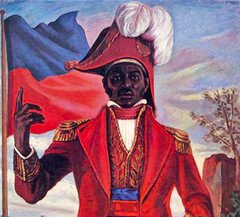 On November 29, 1803, Haitian leaders Jean-Jacques Dessalines, Henri Christophe, and a General Clerveaux joined together to sign a preliminary proclamation of independence for St. Domingo, the former French colony that soon after took the name Haiti. The proclamation came just ten days after French forces under the Vicomte de Rochambeau had surrendered to the Haitian rebels.
On November 29, 1803, Haitian leaders Jean-Jacques Dessalines, Henri Christophe, and a General Clerveaux joined together to sign a preliminary proclamation of independence for St. Domingo, the former French colony that soon after took the name Haiti. The proclamation came just ten days after French forces under the Vicomte de Rochambeau had surrendered to the Haitian rebels.
The Haitian revolt had been launched in 1798 by Toussaint Louverture, a former slave whose original goal had not been independence. By 1802, though, the Haitian rebels had grander designs—fueled in part by concerns that the French would restore slavery and spurred further by the death of Toussaint under French arrest. On November 19, 1803, they won a decisive victory over French forces at the Battle of Vertieres. Ten days later, at their headquarters at Fort Dauphin, the rebel leaders issued their proclamation of independence, given “in the name of the black people, and men of color of St. Domingo.” The proclamation went on, “Restored to our primitive dignity, we have asserted our rights; we swear never to yield them to any power on earth.” The secretary who recorded the document sent a copy to a Philadelphia newspaper, and it was published widely in the United States..
The Haitian leaders issued a more formal document, the Act of Independence, on January 1, 1804. In this act, the signers pledged their support to independence, explained the significance of the act, and named Dessalines leader of the new nation. At this time, the rebels adopted the name Haiti, derived from Hispaniola’s indigenous Taino people, as the name of their nation. Haiti became just the second independent nation in the Americas—and the first nation formed by a successful slave revolt.
“This Day in World History” is brought to you by USA Higher Education.
You can subscribe to these posts via RSS or receive them by email.
Blog: The Children's War (Login to Add to MyJacketFlap)
JacketFlap tags: Home Front, Friendship, Survival, Caribbean, Add a tag
Living on the Dutch island of Curacao, off the coast of Venezuela, 11 year old Phillip Enright thinks it is very exciting when the World War II finally arrives there in February 1942. Packs of German U-Boats start blowing up the island’s oil refineries and sinking ships carrying much needed oil to England. Then he and his friend Henrik witness a ship hit by a torpedo and watch as it burns and sinks with not survivors. Frightened but curious, Phillip tries to talk to his dad about the war, but his mother stops the questions and announces that she wants to take him back home to Virginia.
Dismayed and angry, Phillip gets ready to leave after his father procures passage on a ship for him and his mother. His father must remain in Curacao for his job with Royal Dutch Shell for the duration of the war.
Phillip and his mother set sail on the SS Hato one morning in the beginning of April, Things go well until early in the morning on April 6th, when the ship is torpedoed by German U-Boats. Although safely together in a lifeboat, Philip and his mother get separated when the ship suddenly lurches and starts to quickly sink.
The next thing Philip is conscious of is waking up on a raft with a terrible headache, an elderly West Indian crew member named Timothy and the cat belonging to the ship’s cook, Stew Cat. Philip’s mother has always told him that black people are inferior to whites, to avoid them and to not trust them. Now he finds himself on a raft in the middle of the Caribbean and quickly realizes that his survival completely depends on this one man. His mother’s words seem to ring true when Timothy sparingly doles out their supply of fresh water and biscuits despite Philip' demand that he be given more. So the first thing Philip leans about Timothy is that he can be very wise and very kind, but very stubborn when it comes to doing what is necessary to survive.
After a few days, Philip’s eyesight begins to fade and by the time Timothy spots an island they can get to, he is completely blind. Now, more dependent on Timothy than ever, at first Philip is reluctant to do anything to help set up a camp for themselves on highest part of the island.
Eventually, however, this unlikely pair form a good working relationship. Timothy fashions a cane and braids some vines together to form a rope that Philip can use to guide himself down to the beach. And Timothy is a intelligent and patient teacher, as he prods Philip into actually doing things that, though difficult because of his blindness, will ensure his survival later on. Philip learns how to weave sleeping mats, how to fish and, with some convincing, how to climb a coconut tree to supplement their fish diet.
Their one point of contention is Stew Cat. Timothy thinks the cat is bad luck, but Philip has grown attached to the cat. One morning, he wakes up to find that Timothy and Stew Cat are gone. Philip heads to the beach and discovers that their raft is also gone. When Timothy returns later that day, he won’t answer questions about the cat or the raft, and Philip begins to fear the worst. Then he hears hammering, after which Timothy goes down to the beach. On the roof of the hut, Philip discovers that Timothy had carved a Stew Cat out of wood to end their bad luck. When Timothy returns, he has the real Stew Cat with him, alive and well.
The Cay is a small but powerful book. It was written in 1969, and is dedicated to Dr. Martin Luther King and was the work Taylor was proudest of. Philip’s blindness is symboli
Blog: Amsco Extra! (Login to Add to MyJacketFlap)
JacketFlap tags: Music, Social Studies, Caribbean, World History, Haiti, Add a tag
As part of the ¡Si Cuba! arts festival, the Creole Choir of Cuba will perform at the Brooklyn Academy of Music in early June. As an avid fan and student of Cuban and Haitian music, I’m absolutely thrilled about this upcoming performance. As both an educator and advocate of integrating the arts and cultural history into the classroom, I can’t help making connections between the Creole Choir of Cuba and social studies topics such as slavery, colonialism, Latin American history, the Haitian Revolution, Christopher Columbus, the Tainos, or “The New World,” in general.
 To begin a class, unit, or project by playing the Creole Choir’s song “Kadja Boswa” opens up many points of historical inquiry that students could investigate to understand colonization and slavery in the Americas from multiple perspectives. After the song is over, you could ask the class, “Why is a modern musical group in the Spanish speaking country of Cuba singing a song in French Creole to honor a West African spirit (Kadja) and their ancestors from a country with an Arawak (Ayiti or Haiti) word for its name?”
To begin a class, unit, or project by playing the Creole Choir’s song “Kadja Boswa” opens up many points of historical inquiry that students could investigate to understand colonization and slavery in the Americas from multiple perspectives. After the song is over, you could ask the class, “Why is a modern musical group in the Spanish speaking country of Cuba singing a song in French Creole to honor a West African spirit (Kadja) and their ancestors from a country with an Arawak (Ayiti or Haiti) word for its name?”Blog: PaperTigers (Login to Add to MyJacketFlap)
JacketFlap tags: Eventful World, Caribbean, Cultures and Countries, Anansesem, Anouska Kock, Caribbean children's literature, Caribbean literature magazine, Caribbean young adult literature, Carol Mitchell, June South-Robinson, on-line literary magazine, Sandra Sealy, Summer Edward, Add a tag
From the The Bajan Reporter website:
ONE-OF-A-KIND CARIBBEAN CHILDREN’S LITERATURE MAGAZINE LAUNCHED
Anansesem is a one-of-its-kind online magazine of Caribbean and related writing and illustration for children, by adults
and children. Founded by Summer Edward, a budding Caribbean children’s literature scholar (check out her blog Well-Loved Tales) , the magazine seeks to provide a space to highlight the unique flavor of children’s writing and illustration by Caribbean people, and to thereby recognize and stimulate the children’s publishing industry in the Caribbean. Edward is also the magazine’s Managing Editor.
She says, “I am really trying with the Anansesem magazine to depart from the idea that Caribbean literature for adults is somehow more valid and more worthy of recognition than Caribbean children’s literature. I am convinced that Caribbean children’s literature needs to take itself seriously and that the world needs to take its writers and illustrators seriously, just like Walcott, Naipaul and Brathwaite have been taken seriously by the world. But we here in the Caribbean have to take it seriously first.”
Anansesem goes online as of Monday, May 24, 2010 (with the inaugural issue going live Sept. 1st). Submissions will be reviewed by prominent Caribbean literature advocates, Anouska Kock, Carol Mitchell, Sandra Sealy and June South-Robinson.
Interested contributors can visit the Anansesem website for submission guidelines and more information.
“I want the people who submit to and visit the magazine to sense that children’s literature is a whole other world of possibilities, and that it is just as intellectual, just as prestigious, just as rigorous as Caribbean literature for adults,” says Edward.
Blog: Susanne Gervay's Blog (Login to Add to MyJacketFlap)
JacketFlap tags: Charities, Carole Anne Ferris, Joanne Johnson, Tobago, Trinidad, News, SCBWI, Writing, Caribbean, Add a tag
 The colour and beauty of Trinidad and Tobago, the Caribbean took my breath away.
The colour and beauty of Trinidad and Tobago, the Caribbean took my breath away.
These beautiful children send their message to the children of the Victorian Fires -
Holding hands with thoughts to make your hurts feel better
from the children of Trinidad & Tobago.
Joanne Johnson  head of SCBWI Caribbean wrote this beautiful poem to reach across the seas to Australian children - they are not alone.
head of SCBWI Caribbean wrote this beautiful poem to reach across the seas to Australian children - they are not alone.
The illustration and photography by the gifted Carole Anne Ferris captures the power of nature to heal - www.cafemokagallery.com -see more of Carole’s work.
Thankyou to the Caribbean for sharing your creativity and love.
Add a Comment






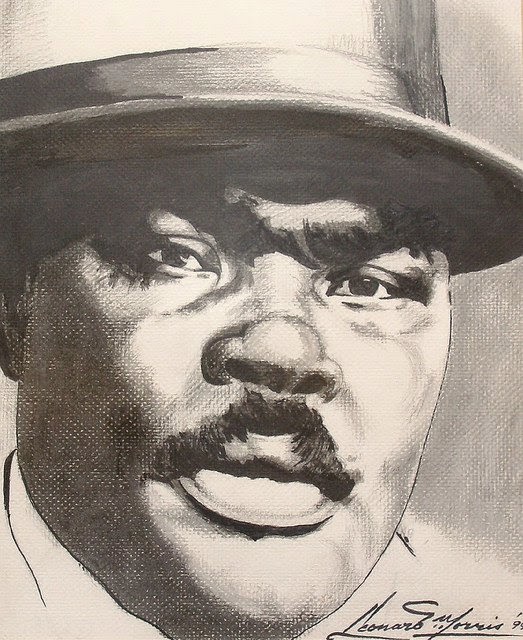



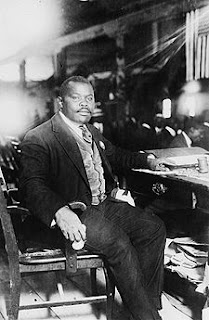


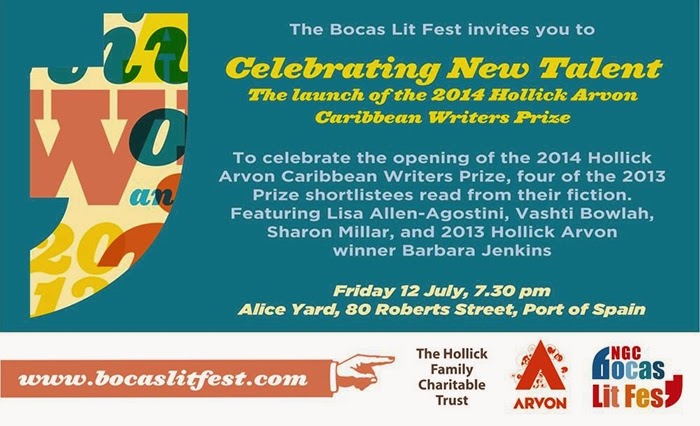



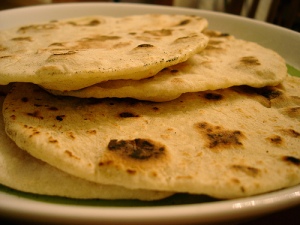
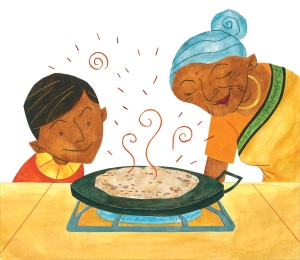
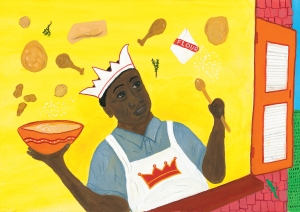
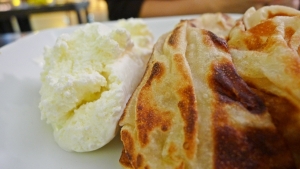



Hey there!
Quite a nice post this was. Except, if I may suggest, in India at least, roti’s aren’t generally stuffed at all. It’s parathas, another kind of bread that’s often stuffed.
But no matter. A nice post indeed.
Peace.
Kabir
Hi Kabir,
Thanks for the correction! I’ve had stuffed parathas before, and they are DELICIOUS.
No problem! I absolutely, totally love parathas myself! And somehow no one can seem to make them as well as my mother does.
Came across your post while I was looking for a drop of inspiration for my own post. Something which basically tells you how to make chicken biryani at home. It’s done, finally.
P.S.: Have you had chicken biryani before?
Peace.
Kabir
Hi Kabir,
Haven’t had chicken biryani before, but will check out your recipe. Thanks for sharing!
Hannah
Kabir
Kabir,
I LOVE Biryani! My friend Aravind has a great recipe. I just made Saag Paneer last night… a family favorite!
http://michellecusolito.blogspot.com/2011/07/saag-paneer-cheese-in-spinach-sauce.html
Hannah, I look forward to reading this book and trying out the recipe!
When I wrote Drummer boy of John John I was dreaming of the Caribbean and the music and the taste of a delicious roti. This post has brought back those beautiful sundrenched aromas and the Roti King’s famous chicken roti.. with secret herbs and spices!
Thanks Hannah
Mark